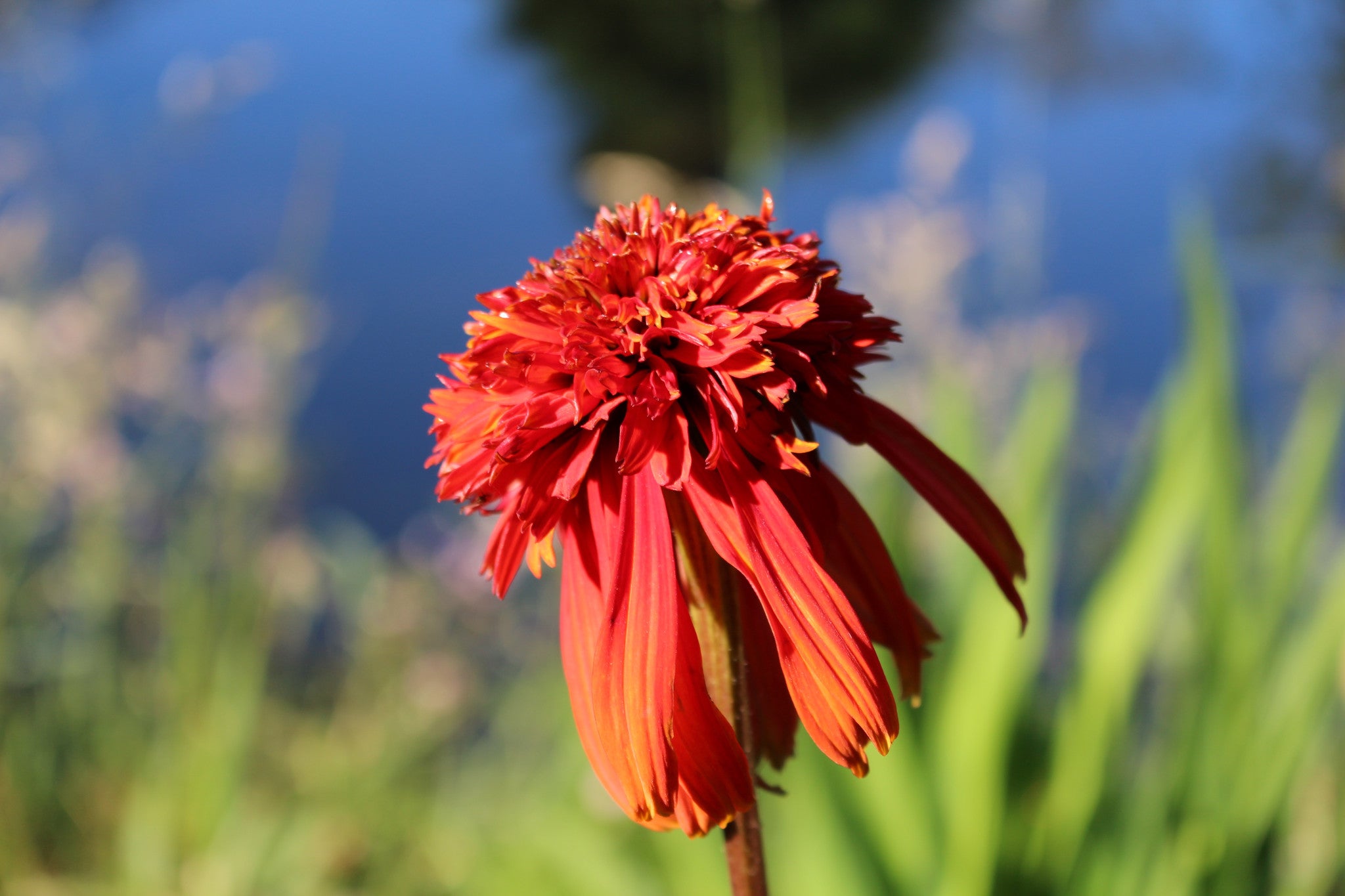Echinacea 'Hot Papaya' (d)
Approx. 0.5 litre pot
About this cultivar:
Echinacea 'Hot Papaya' (d) is similar to 'Razzamatazz' except it starts out orange and ends red. That sounds boring.. how about this instead: Echinacea 'Hot Papaya' is one of the most revolutionary coneflowers to hit the market in the coneflower craze. Introduced in 2007 by Holland's Arie Blom, the blooms emerge with florescent, papaya coloured ray petals and a deep orange-yellow cone. It matures with rich, spicy orange ray petals that are topped by a double, reddish-orange pompom. Each pompom has a remarkable papaya coloured halo in the center that grows as it ages. Its Echinacea purpurea blood-lines, are also evident since it sports thick, deep green leaves and strong, sturdy stems with maroon markings.
- Position: Full shade, partial shade
- Soil: Almost any soil, grows well in Ballyrobert
- Flowers: July, August, September
- Other features: Grows well in Ballyrobert
- Hardiness: Fully hardy - grows well in Ballyrobert!
- Habit: Clump forming
- Foliage: Deciduous
- Height: 60 - 90 cm (2 - 3 ft)
- Spread: 45 - 75 cm (1.5 - 2.5 ft)
- Time to full growth: 2 to 5 years
- Plant type: Herbaceous Perennial
- Colour: Green, red
- Goes well with: Aster, Buddleia, Coreopsis, Eucomis, Euphorbia, Geranium, Iris, Kniphofia, Monarda, Phlox, and Salvia
About this genus:
Echinacea is a genus of nine species of herbaceous flowering plants in the daisy family (Asteraceae). The generic name is derived from the Greek word echino, meaning "sea urchin," due to the spiny central disk. The common name is "coneflower". This American native doesn't help with cold symptons! According to Wallace Sampson, MD, its modern day use as a treatment for the common cold began when a Swiss herbal supplement maker was "erroneously told" that echinacea was used for cold prevention by Native American tribes who lived in the area of South Dakota!
The books will say that two things that Echinacea plants do not like are heavy clay soils and poor winter drainage; and you know what? they are right for a change! We have had trouble growing most of them here in our wet clay garden at Ballyrobert - and we have tried many many cultivars over the years. That just leaves us with only a few cultivars which we grow and are confident enough to sell ( see photos if you don't believe us!). These few cultivars we sell (not Echinaceas in general!) should be ok almost anywhere that isn't a pond or in full shade. You can thank us for the the hard work when yours come into flower! We will keep trialing all the new cultivars tho, so watch this space.
Like many genus in the daisy family the flower heads give great structure long after the petals have dropped. Common partner plants are numeros (mostly from the daisy family); Aster, Buddleia, Coreopsis, Eucomis, Euphorbia, Geranium, Iris, Kniphofia, Monarda, Phlox and Salvia/ Although I must say I like them on their own.


